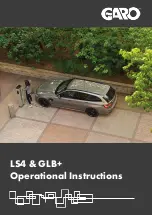
305
4-5. Using the driving support systems
4
Driving
and similar stationary objects
*
●
Following vehicles that are in the same
lane
*
●
Vehicles traveling 2 lanes away from your
vehicle
*
●
Vehicles which are being overtaken rap-
idly by your vehicle
*
*
: Depending on the conditions, detection
of a vehicle and/or object may occur.
■
Conditions under which the System may
not function correctly
●
The Blind Spot Monitor may not detect
vehicles correctly in the following situa-
tions:
• When the sensor is misaligned due to a
strong impact to the sensor or its sur-
rounding area
• When mud, snow, ice, a sticker, etc. is
covering the sensor or surrounding area
on the rear bumper
• When driving on a road surface that is
wet with standing water during bad
weather, such as heavy rain, snow, or fog
• When multiple vehicles are approaching
with only a small gap between each vehi-
cle
• When the distance between your vehicle
and a following vehicle is short
• When there is a significant difference in
speed between your vehicle and the vehi-
cle that enters the detection area
• When the difference in speed between
your vehicle and another vehicle is
changing
• When a vehicle enters a detection area
traveling at about the same speed as your
vehicle
• As your vehicle starts from a stop, a vehi-
cle remains in the detection area
• When driving up and down consecutive
steep inclines, such as hills, dips in the
road, etc.
• When driving on roads with sharp bends,
consecutive curves, or uneven surfaces
• When vehicle lanes are wide, or when
driving on the edge of a lane, and the
vehicle in an adjacent lane is far away
from your vehicle
• When an accessory (such as a bicycle
carrier) is installed to the rear of the vehi-
cle
• When there is a significant difference in
height between your vehicle and the
vehicle that enters the detection area
• Immediately after the Blind Spot Monitor
is turned on
• When towing with the vehicle
●
Instances of the Blind Spot Monitor
unnecessarily detecting a vehicle and/or
object may increase in the following situ-
ations:
• When the sensor is misaligned due to a
strong impact to the sensor or its sur-
rounding area
• When the distance between your vehicle
and a guardrail, wall, etc. that enters the
detection area is short
• When driving up and down consecutive
steep inclines, such as hills, dips in the
road, etc.
• When vehicle lanes are narrow, or when
driving on the edge of a lane, and a vehi-
cle traveling in a lane other than the adja-
cent lanes enters the detection area
• When driving on roads with sharp bends,
consecutive curves, or uneven surfaces
• When the tires are slipping or spinning
• When the distance between your vehicle
and a following vehicle is short
• When an accessory (such as a bicycle
carrier) is installed to the rear of the vehi-
cle
• When towing with the vehicle
Summary of Contents for RX350 2023
Page 170: ...170 3 6 Favorite settings...
Page 436: ...436 6 3 Do it yourself maintenance Rear...
Page 468: ...468 6 3 Do it yourself maintenance...
Page 560: ...560 8 3 Initialization...
Page 571: ...571 Index What to do if Troubleshooting 572 Alphabetical Index 574...
Page 587: ...587 Alphabetical Index...
Page 588: ...588 Smart access system with push button start Certifications...
Page 589: ...589...
Page 590: ...590 Digital Key...
Page 591: ...591...
Page 592: ...592...
Page 593: ...593 Tire pressure warning system...
Page 594: ...594...
Page 595: ...595 Millimeter wave radar sensor...
Page 596: ...596 Smart access system with push button start and engine immobilizer system...
Page 597: ...597...
Page 598: ...598 Safety Connect...
Page 599: ...599 Wireless charger...
Page 600: ...600...
Page 601: ...601 Blind Spot Monitor...
Page 602: ...602 Intuitive parking assist Garage door opener...
Page 603: ...603...
















































